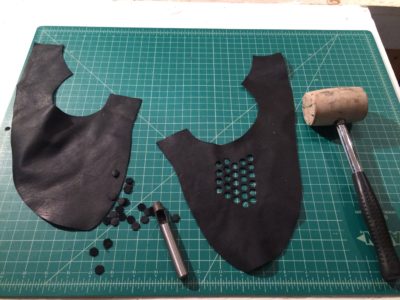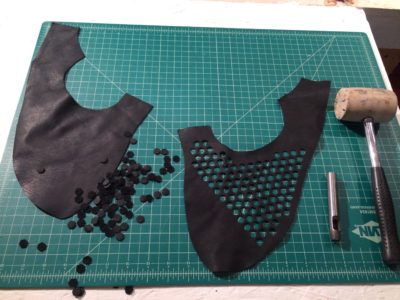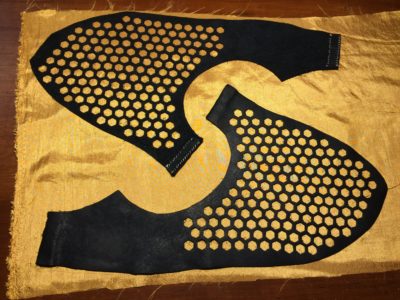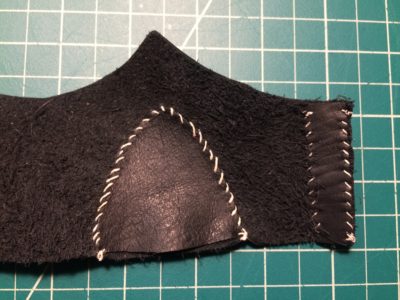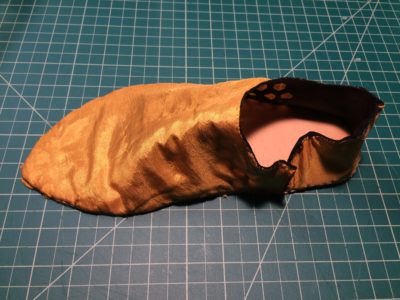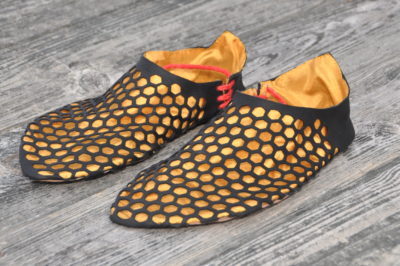
Shoes by Robert
Beekeeper's Shoes, Mark II
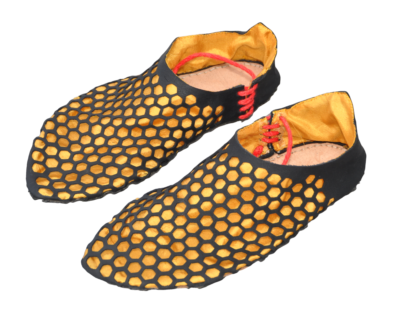
As in the original Beekeeper's Shoes, this design sports hexagonal punched openwork. Despite the basic similarity of the openwork, several aspects of this version differ significantly from the former one.
Mark II features:
- thinner leather
- smaller punch
- more area of the leather is punched
- lacing moved from instep to side, with reinforcement
- silk lining added
- heel stiffener added
Numerous examples of openwork shoes have survived archaeologically.
No example of hex-shaped punched shoes have been found, but we do have examples of shoes with repetitive geometric shapes across their entire instep.
We have not only actual surviving shoes, but also manuscript illustrations depicting openwork.
These shoes were made for a beekeeper, thus the shape of the punch used. They probably should not be worn when working with bees.
The silk lining in these shoes serves to show off the openwork itself, and its color reinforces the idea of a beehive no matter what is worn on the foot.
No silk shoe linings survive from our period, but they are plausible. If made of silk, they would not survive in the soil conditions that preserve leather.
Some shoes have holes that might have once been attachment points for liners. We also have a legal document that mentions shoe linings.
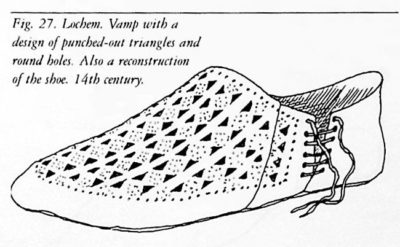
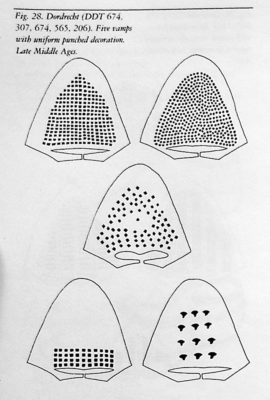
Last updated April 10, 2019.
